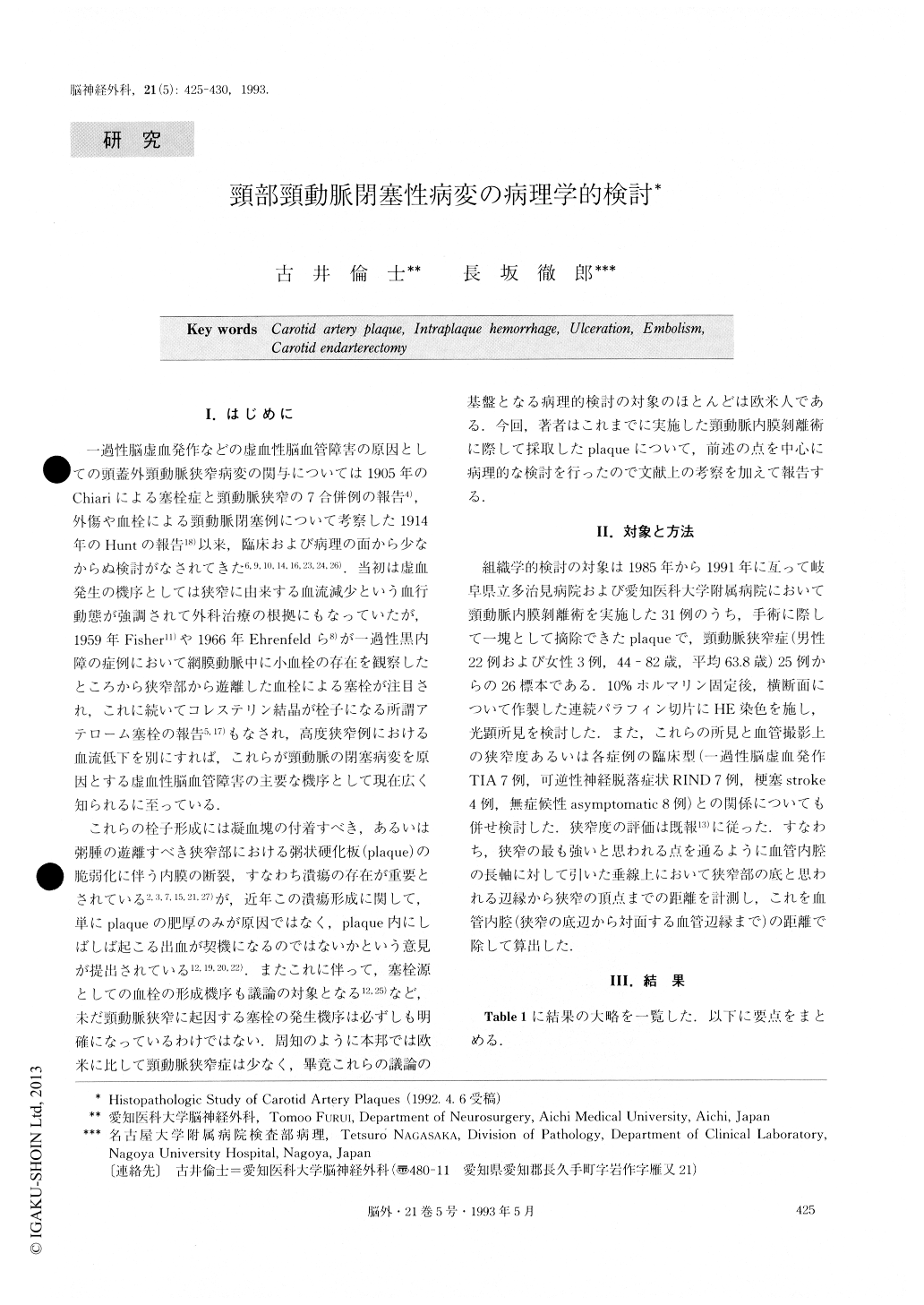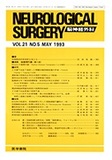Japanese
English
- 有料閲覧
- Abstract 文献概要
- 1ページ目 Look Inside
I.はじめに
一過性脳虚血発作などの虚血性脳血管障害の原因としての頭蓋外頸動脈狭窄病変の関与については1905年のChiariによる塞栓症と頸動脈狭窄の7合併例の報告4),外傷や血栓による頸動脈閉塞例について考察した1914年のHuntの報告18)以来,臨床および病理の面から少なからぬ検討がなされてきた6,9,10,14,16,23,24,26).当初は虚血発生の機序としては狭窄に由来する血流減少という血行動態が強調されて外科治療の根拠にもなっていたが,1959年Fisher11)や1966年Ehrenfeldら8)が一過性黒内障の症例において網膜動脈中に小血栓の存在を観察したところから狭窄部から遊離した血栓による塞栓が注目され,これに続いてコレステリン結晶が栓子になる所謂アテローム塞栓の報告5,17)もなされ,高度狭窄例における血流低下を別にすれば,これらが頸動脈の閉塞病変を原因とする虚血性脳血管障害の主要な機序として現在広く知られるに至っている.
Twenty-six carotid plaques were obtained from endar-terectomies in 25 cases and microscopically studied. Ulceration was observed in 11 of the 26 plaques (42%) and more frequently in the plaques from symptomatic cases (TIA, RIND or stroke) (56%) than from asymp-tomatic cases (13%). Although ulceration occurred more commonly as the degree of plaque stenosis increased, it was also observed in 4 plaques with relatively mild ste-nosis. The interesting finding in terms of ulcer formation was that 10 of the 11 plaques with ulceration showed in-tramural hemorrhage, which occurred in 13 of all plaques (50%). Hemorrhage occurred in connection with ulcer in 7 plaques and was exposed into the arterial lumen in 5 of these 7 plaques. Atheromatous debris was found within the ulcer in 4 other plaques with intramural hemorrhage. These results suggest that intraplaque hemorrhage plays an important role in ulceration, through which a clot or atheromatous debris may eventually cause an embolism.

Copyright © 1993, Igaku-Shoin Ltd. All rights reserved.


